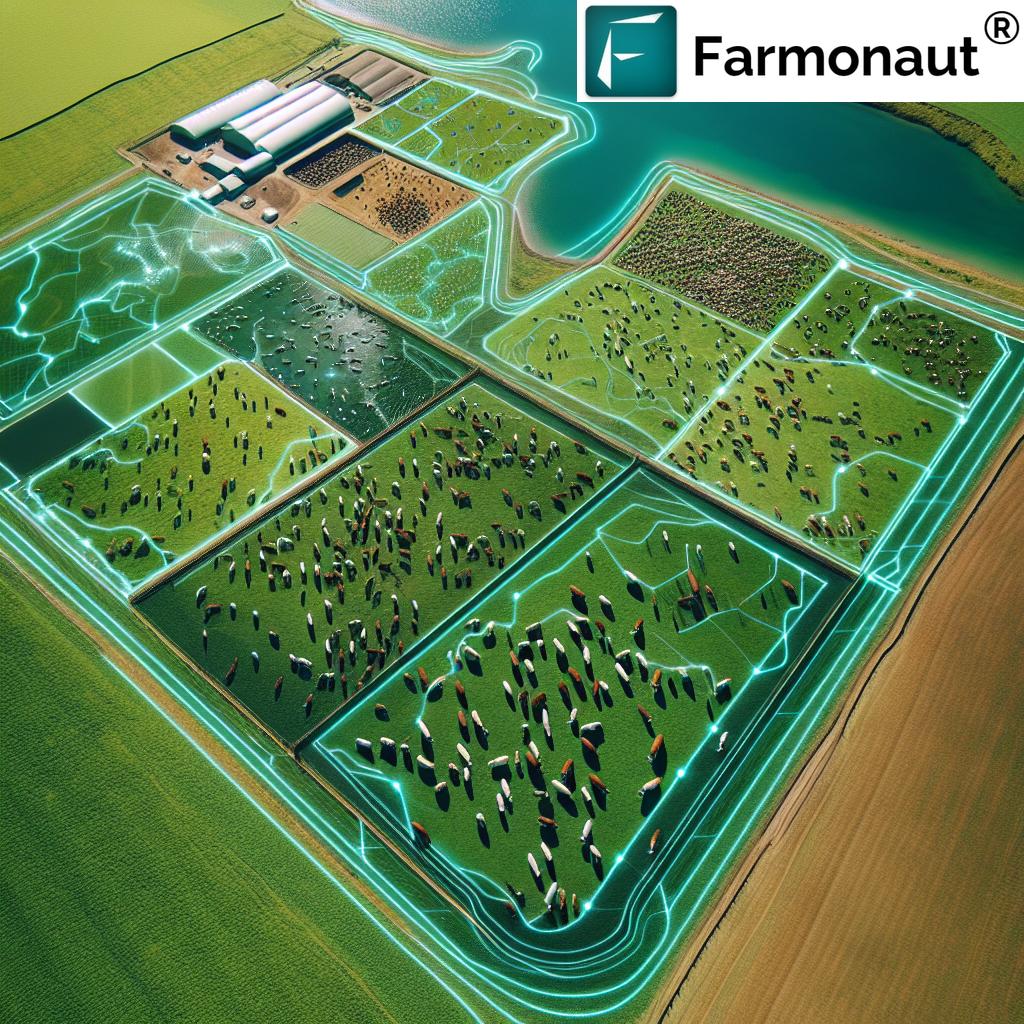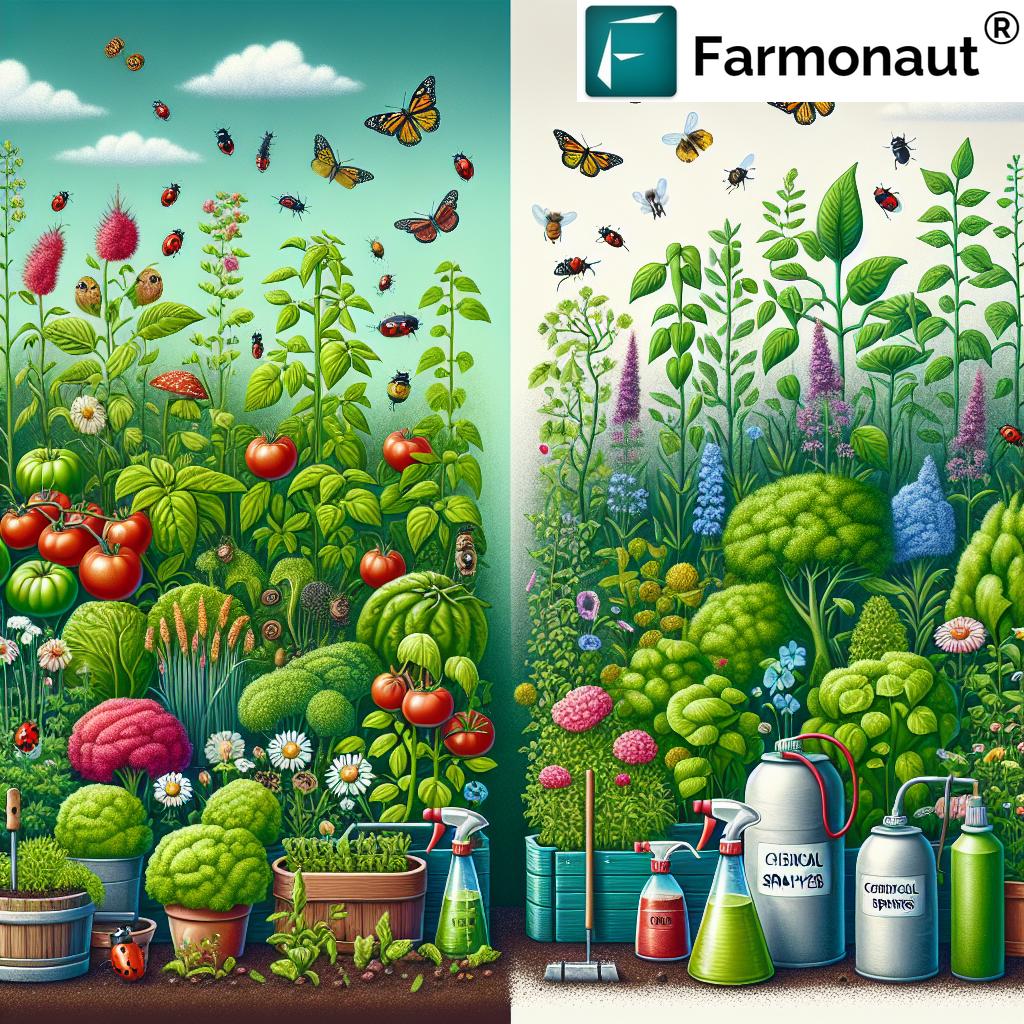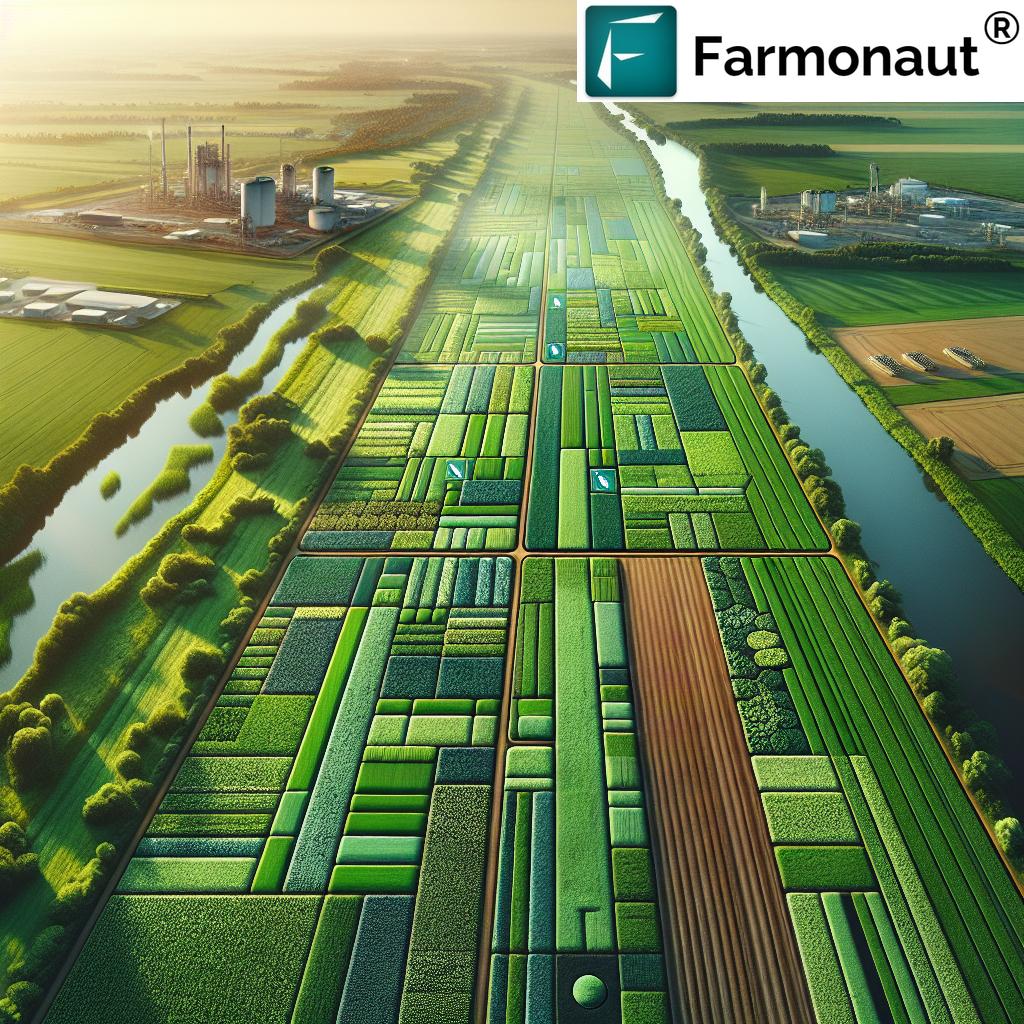Agriculture Design & Equipment: Top 2025 Vertical Farming Trends
“By 2025, vertical farming equipment is projected to reduce water usage by up to 95% compared to traditional agriculture.”
In 2025, the agricultural sector is undergoing a transformative evolution driven by rapid advancements in agriculture design, innovative technology, and a renewed focus on sustainability practices. Farms worldwide are embracing the integration of modern agriculture design principles—from intelligent equipment design to the vertical farming architecture reshaping cityscapes and rural communities alike. This seamless fusion of cutting-edge technology with traditional practices is revolutionizing the way food is grown, processed, and delivered.
Table of Contents
- Agriculture Design and Sustainability
- Innovations in Agriculture Equipment Design
- Role of Agriculture Design Software
- Vertical Farming Design: The Future of Urban Agriculture
- Feature Comparison Table of Emerging Vertical Farming Technologies (2025)
- Agriculture Farm Logo Design: Branding in a Competitive Market
- Farmonaut: Satellite-Driven Insights for Smart Agriculture Design
- FAQ on Agriculture Design, Equipment, and Vertical Farming Trends
- Conclusion – Futureproofing Food Systems in 2025 and Beyond
Agriculture Design and Sustainability: A 2025 Imperative
The concept of agriculture design has grown remarkably in scope and complexity. Today, it goes far beyond merely laying plots—it encompasses holistic planning involving land use optimization, crop selection, advanced water management, and ecosystem preservation. Modern sustainable agriculture design is rooted in principles that prioritize soil health, biodiversity, and careful resource conservation—all critical factors for combating climate change impacts and ensuring the long-term viability of food systems.
- Holistic Planning: Today’s agriculture design encompasses everything from terrain analysis and soil quality assessment to microclimate adaptation and integrated pest management.
- Biodiversity & Conservation: Sustainable practices are increasingly integrating native flora and fauna to support natural ecosystems while maximizing productivity.
- Soil Health as a Foundation: Principled approaches to minimize soil erosion, restore organic matter, and promote beneficial microorganisms are front and center for agricultural stakeholders in 2025.
Embracing precision agriculture is now a key component. By utilizing satellite imagery, drones, IoT sensors, and advanced analytics, farmers and their teams can access real-time data that informs planting schedules, irrigation needs, and pest or disease control strategies. These high-resolution satellite insights—like those leveraged on Farmonaut’s platform—are transforming the field of resource management, enhancing efficiency, and supporting robust environmental stewardship.
Industry-leading solutions, such as Farmonaut’s Carbon Footprinting service, help businesses monitor and minimize their environmental impact—offering actionable data for regulatory compliance and sustainability.
“Over 70% of new agriculture design patents in 2025 are expected to focus on vertical farming technologies.”
Innovations in Agriculture Equipment Design (2025 Focus)
Agriculture equipment design in 2025 is converging with AI-driven technology. This shift is enabling farmers and operators to run their operations more efficiently—with an emphasis on reducing environmental impact and maximizing resource efficiency.
Emerging Trends in Modern Agricultural Equipment
- Autonomous Tractors: Powered by AI and GPS guidance, these machines can navigate fields, optimize input use (like fertilizer and water), and even plant or harvest crops autonomously.
- Robotic Harvesters: Equipped with machine learning algorithms and smart sensors, these robots select and pick ripe produce with minimal human intervention, reducing waste and labor costs without compromising quality and yield.
- Drone Sprayers and Precision Mapping: Drones are now critical equipment, facilitating input application, pest management, and monitoring crop health. Farmonaut’s real-time satellite-based crop health monitoring and AI-powered recommendations boost productivity and control.
Modular equipment designs are fostering adaptability across diverse crops and terrains, making farming more inclusive—especially for smallholder operations.
- Flexibility: Modern tractors and harvesters can swap components to handle everything from plowing and planting to harvesting and packaging.
- Smart Integration: New equipment integrates seamlessly with digital management systems for end-to-end oversight of farm processes.
Key Benefits in 2025
- Reduced labor demand while maintaining or improving yield quality
- Efficient use of energy and resources through data-driven optimization
- Greater adaptability for changing crops or farm sizes
- Support for inclusive practices across smallholder, mid-size, and corporate farming operations
Real-time equipment and resource management has become indispensable. Farmonaut’s Fleet Management solution
empowers agribusinesses in optimizing machine and vehicle use, reducing operational costs, and enhancing safety and accountability through advanced satellite and AI insights.
The Role of Agriculture Design Software in 2025
Software built for agriculture design is now at the core of innovative farm planning and management. This decade, agriculture design software has become an indispensable tool for farmers and agronomists seeking to facilitate planning, simulate outcomes, and manage complex agricultural systems.
What Sets Top Agriculture Design Software Apart?
- Visual Modelling: Modeling of crop rotations, irrigation layouts, soil amendments, and greenhouse positioning allows for virtual testing before implementation.
- Weather & Climate Integration: Advanced software incorporates climate models and predictive analytics to anticipate environmental changes and pest outbreaks. This empowers proactive decision-making.
- Resource Optimization: Software analyzes data from sensors, satellite imagery, and IoT devices (see Farmonaut’s Large-Scale Farm Management solution for enterprise-scale coordination), ensuring inputs are used efficiently and risk is minimized.
- Blockchain-enabled Traceability: Solutions such as Farmonaut’s Traceability module can be integrated, enabling secure documentation of food and crop journeys—improving consumer confidence in the food supply chain.
- Scalability: Customizable platforms from single fields to regional-scale agricultural operations.
Proactive planning through this software ecosystem enables the integration of environmental goals and yield objectives. In 2025, software is no longer just a supporting tool—it’s the engine of precision agriculture and food system resiliency.
Vertical Farming Design: The Future of Urban Agriculture
Perhaps nowhere are design innovations more visible than in vertical farming design. By 2025, rapid urbanization and land scarcity have accelerated adoption of vertical farms—multi-layer, controlled environments that optimize food production within city limits.
Key Features of Modern Vertical Farming Design
- Space Optimization: Vertical stacks maximize limited urban spaces.
- Controlled Environment Agriculture (CEA): Hydroponics and aeroponics systems use minimal water and precision nutrient delivery in clean, pest-controlled settings.
- Advanced LED Lighting: Next-gen LEDs customize spectral output for each crop stage—optimizing photosynthesis and energy use.
- Energy & Sustainability: Integration with solar, wind, and renewable energy sources to offset power consumption and greenhouse gas emissions.
- Water Savings: Leading vertical farms in 2025 use up to 95% less water than field-grown crops.
- Shortened Food Chains: By locating farms close to urban consumers, logistics are simplified and food is fresher.
Vertical farming design is not only about growing leafy greens—it now encompasses a diverse array of crops, from berries and tomatoes to niche herbs and even staple grains in pilot projects. The broad spectrum of produce enhances local food security and provides new business opportunities for urban entrepreneurs.
Advantages in Food Sustainability
- Closed-Loop Nutrient Systems: Efficient recycling ensures minimal waste.
- Plant-Based Protein Production: Some vertical farms are experimenting with legumes and pulse crops for local protein supply.
- Year-Round Productivity: Independent of external weather and climate, supporting predictable supply for urban consumers.
- Pest and Disease Control: Controlled air filtration and monitoring drastically reduce chemical use.
“Over 70% of new agriculture design patents in 2025 are expected to focus on vertical farming technologies.”
For those interested in leveraging vertical farming design and urban agriculture, Farmonaut’s crop plantation advisory tools assist in precision crop selection, health monitoring, and irrigation scheduling—even in dense city environments.
Feature Comparison Table of Emerging Vertical Farming Technologies (2025)
| Trend/Innovation Name | Estimated Market Adoption (%) in 2025 | Main Application | Projected Cost Range (USD) | Environmental Impact | Notable Equipment/Design Example |
|---|---|---|---|---|---|
| Advanced LED Adaptive Lighting | 82% | Lighting & Photosynthesis Optimization | $8,000 – $100,000 (per vertical farm project) | Up to 45% reduction in energy use vs. legacy lighting | Philips GreenPower LED Interlighting |
| Hydroponic Closed-Loop Systems | 77% | Water and Nutrient Efficiency | $3,000 – $40,000 (per system module) | Up to 95% less water use | Aerospring Home Hydroponic Tower |
| Automated Environmental Monitoring | 69% | Climate, Humidity, and Nutrient Oversight | $10,000 – $120,000 (complete system) | Enables 30-40% input reduction | Priva Connected Climate Control Platform |
| Modular Mobile Vertical Farm Units | 55% | Urban Food Production, Community Gardens | $15,000 – $150,000 (per container/module) | Over 80% land use reduction | Freight Farms, Growtainer |
| AI & IoT-Driven Farm Management Software | 61% | Process Automation, Crop Health Monitoring | $5,000 – $60,000/year | Enables up to 25% yield increase | Autogrow, Farmonaut Web Platform |
| Blockchain Traceability Systems | 48% | Supply Chain Verification, Food Safety | $7,000 – $70,000 (implementation) | Reduces fraud, boosts transparency | Farmonaut Traceability, IBM Food Trust |
Agriculture Farm Logo Design: Branding in a Competitive Market
In today’s competitive landscape, agriculture farm logo design is about much more than visual appeal. An effective farm logo communicates values: a commitment to organic principles, technological integration, and environmental stewardship. With consumers increasingly demanding transparency in their food’s origins, branding in 2025 must be both meaningful and trustworthy.
- Nature-Inspired Design: Incorporating botanical elements, earth tones, and symbols of growth or harmony.
- Minimalism Meets Tech: Logos that use clean lines, simple iconography, and subtle references to digital or satellite technology indicate a progressive and future-ready philosophy.
- Local Heritage: Use of regional motifs or colors for urban farms and community agriculture ventures helps foster a sense of connection and trust.
Consumers recognize and value these signals, rewarding brands that connect “farm to table” through clear, purposeful branding. Whether launching a vertical farming venture or digital farm management service, the logo is a critical touchpoint for trust and recognition.
2025 Trends in Agriculture Farm Logo Design
- Bilingual or Multilingual Logos for global reach in diverse markets
- Icons referencing satellite imagery or AI oversight, especially for tech-driven agricultural brands
- Green, blue, and earth tones as the color palette backbone for sustainability associations
Farmonaut: Satellite-Driven Insights for Smart Agriculture Design
As we explore the frontier of agriculture design, it’s clear that cutting-edge data and satellite insights are central to making agriculture more sustainable, responsive, and productive. At Farmonaut, our mission is to democratize access to advanced aerospace technologies and AI-driven solutions for everyone—from the individual farmer to multinational enterprises and policy-makers.

Satellite Data API: Unlock high-frequency, field-level monitoring for custom apps
API Developer Docs: Integrate satellite, crop health, and weather data insights
- Satellite Monitoring: We deploy multispectral satellite images for cross-sectoral monitoring: from vegetation health, soil conditions, and water stress to broader infrastructure projects.
- AI-Powered Decision Making: Our Jeevn AI advisory tools leverage these data streams for real-time field evaluation, risk alerts, and operational recommendations.
- Blockchain Traceability: With blockchain, transparency and traceability reach new heights in global food and resource supply chains (see our above-linked traceability feature).
- Real-Time Resource Tracking: Our tools optimize fleet usage, monitor machinery, and enhance safety—ensuring efficiency across all farm equipment.
- Environmental Impact Monitoring: Farmonaut’s platform powers carbon footprint monitoring and climate compliance for agriculture, supporting your journey to sustainability.
Our vision is clear: to facilitate smarter, data-driven farm planning and management in an inclusive, scalable, and cost-effective manner for smallholders, large agribusinesses, and governments alike. Our accessible platform and powerful API open new pathways for urban, peri-urban, and rural agriculture design in 2025 and beyond.
Frequently Asked Questions (FAQ) – Agriculture Design, Equipment, and Vertical Farming (2025)
-
What is agriculture design and why is it critical for future food systems?
Agriculture design refers to the holistic planning, organization, and management of farms, fields, and entire food production systems. It integrates principles of sustainability, efficient resource use, and technological advancements to produce food more reliably, efficiently, and with less environmental impact amid growing climate challenges. -
How are vertical farming design innovations changing urban agriculture?
Vertical farming design leverages stacking, hydroponic/aeroponic systems, AI-driven management, and renewable energy to maximize space and sustainability in cities. This approach reduces transportation emissions, enables year-round production, and minimizes water usage compared to traditional agriculture. -
What is the role of technology in modern agriculture equipment design?
Modern agriculture equipment design now incorporates AI, machine learning, drones, and IoT sensors, making machines smarter and more autonomous. These innovations optimize input use, reduce labor demands, enhance adaptability, and ultimately drive higher productivity. -
Why are blockchain traceability and software platforms essential for agriculture in 2025?
With consumers demanding food origin transparency and regulators enforcing stricter oversight, blockchain-based traceability and advanced agriculture design software ensure secure, efficient record-keeping and supply chain integrity. They reduce fraud, build trust, and simplify compliance. -
How does Farmonaut support sustainable agriculture and smart farm management?
Farmonaut provides satellite-based monitoring, AI-powered advisory systems, blockchain traceability, and sophisticated management tools through web, mobile, and API. Our platform supports farmers, businesses, and governments with real-time data for smarter decisions, improved resource use, and sustainability compliance.
Conclusion – Futureproofing Agriculture Design for 2025 and Beyond
The future of agriculture design is powerful, connected, and fundamentally transformative. By 2025, the seamless integration of technology and traditional knowledge, coupled with a relentless focus on sustainability and food system resiliency, is empowering farmers and communities worldwide.
- Holistic planning and precision agriculture enabled by satellite and AI data are redefining what it means to farm efficiently and responsibly.
- Agriculture equipment design is evolving with smart, modular, and AI-driven machinery making advanced practices accessible to even smallholder farmers.
- Agriculture design software and blockchain traceability give users precise control, risk mitigation, and transparency—core requirements for today’s competitive, health-conscious food markets.
- Vertical farming design is unlocking new urban foodscapes, reducing footprint, and supporting local economies—all while honoring the principles of environmental stewardship and innovation.
- Effective branding through farm logo design strengthens trust, identity, and loyalty amid an increasingly demanding consumer base.
We stand at the threshold of a new agricultural era—one where sustainability, consumer trust, and technological progress are inextricably linked. Stakeholders who embrace these 2025 trends in agriculture design and equipment will be best positioned to deliver abundant, healthy food for a growing planet—today, tomorrow, and well into the future.













